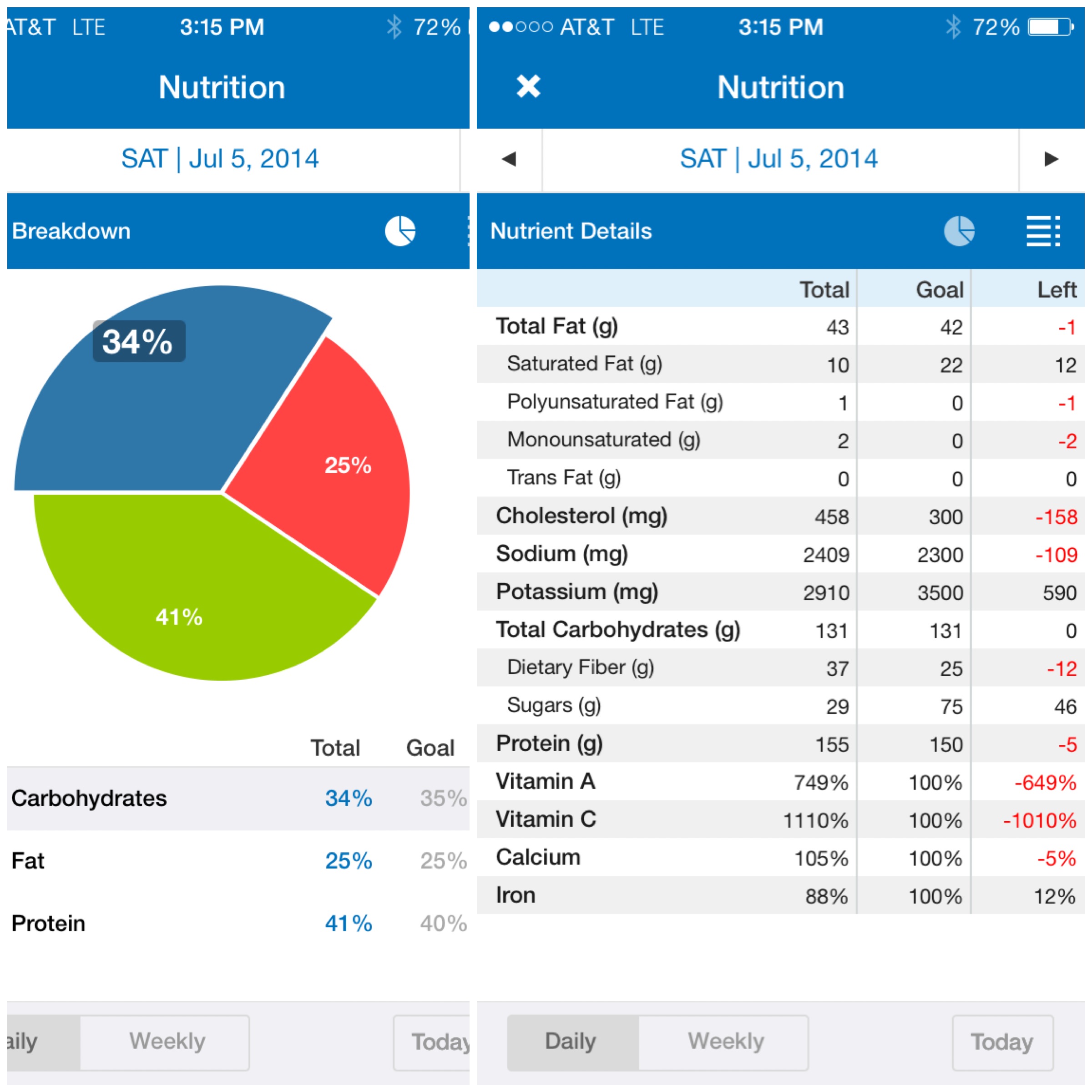

Water is essential for health, and it's easy to become dehydrated, especially if you're active. No matter your goal, it's also important to track water intake. This includes calories, protein, fat, carbs, fiber, vitamins, and minerals. If you're trying to improve your overall health, you'll want to track all of the macro and micronutrients. Protein is essential for muscle growth, and carbs are important for energy.

If you're trying to gain muscle, you'll want to track calories, protein, and carbs. Protein and fiber are both filling nutrients that can help you feel satisfied with fewer calories. If you're trying to lose weight, you'll want to focus on tracking calories, protein, and fiber. The answer to this question depends on your goals.
Macro tracking how to#
Now that you know how to track macros and micros, it's time to talk about which ones you should track. Make sure you're inputting all the foods you eat, and that you're accurately tracking the macros and micros they contain. No matter which method you choose, the important thing is to be consistent. This method is best for people who are comfortable with computers and excel at tracking data. You can also use a spreadsheet to track your macros and micros. With a food journal, you'll track the foods you eat and the macros and micros they contain. This can be a physical journal that you write in or an online food diary. These apps allow you to input the foods you eat and track the macros and micros they contain.Īnother option is to use a food journal. One popular method is to use a food-tracking app, such as MyFitnessPal. The most important thing is to find a method that works for you and that you'll stick with. There are a few different ways to track macros and micros. No matter your goal, tracking macros, and micros can help you make sure you're getting the nutrients you need to support your health. On the other hand, if you're trying to gain muscle, you'll want to make sure you're getting enough protein and carbs, but not too much fat. If you're trying to lose weight, gain muscle, or just improve your overall health, it's important to pay attention to the nutrients you're taking in.įor example, if you're trying to lose weight, tracking macros can help you make sure you're getting enough protein to maintain muscle mass, but not too many carbs or fat. Why You Should Track Your Macros and Microsįirst, let's talk about why you might want to track macros and micros. This guide will help you get started tracking both micros and macros so that you can make the best choices for your health! Micros are the micronutrients, which include vitamins and minerals. If you're not familiar with the terms, macros are the big three macronutrients - protein, fat, and carbohydrates. That's where tracking macros and micros come in!

This includes not just calories, but also the macro and micronutrients that those foods contain. See the page in the Macro Book and reverse dieting… more to come.Part of health and wellness is knowing what you're putting into your body. Susie Q will slowly increase calories over a period of time with the goal of increasing her metabolism without gaining weight. 1500 calories is pretty low, and Susie Q’s goal should be to restore her metabolism and overall health so that she can be at a place where she can eat a healthy amount while losing weight. Then, those cutting calories becomes the maintenance level and in order to lose, you have to cut more calories. When we drop calories, our bodies will lose weight until they adapt. She is a chronic dieter, and has been cutting calories for too long. Susie Q is an example of someone who would benefit from reverse dieting. Let’s use an example: Susie Q calculates her maintenance macros at 2000 calories/day, but she is currently eating 1500 calories and unable to lose weight. When you calculate your macros following the steps in the Macro Book, you may hit my note that asks you to check if what you are currently eating is significantly less than your calculated maintenance macros. This was one of the most popular questions I am going to put together a detailed blog post on reverse dieting but here’s a brief summary. HOW TO KNOW IF I NEED TO TRY REVERSE DIETING?ĪNSWER: Reverse dieting is the process of slowly increasing calories with the goal of boosting your metabolism so you can burn more calories throughout the day.


 0 kommentar(er)
0 kommentar(er)
